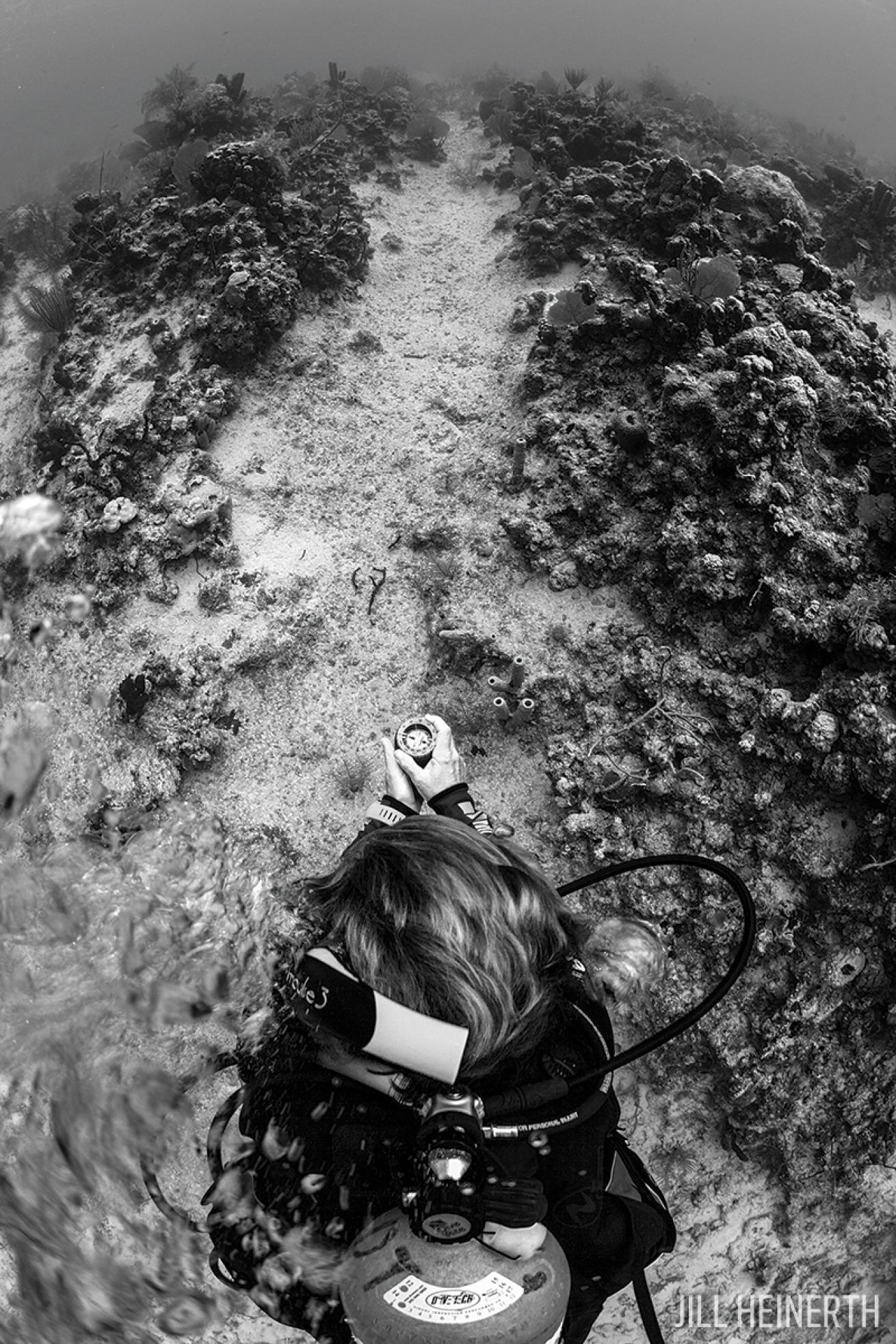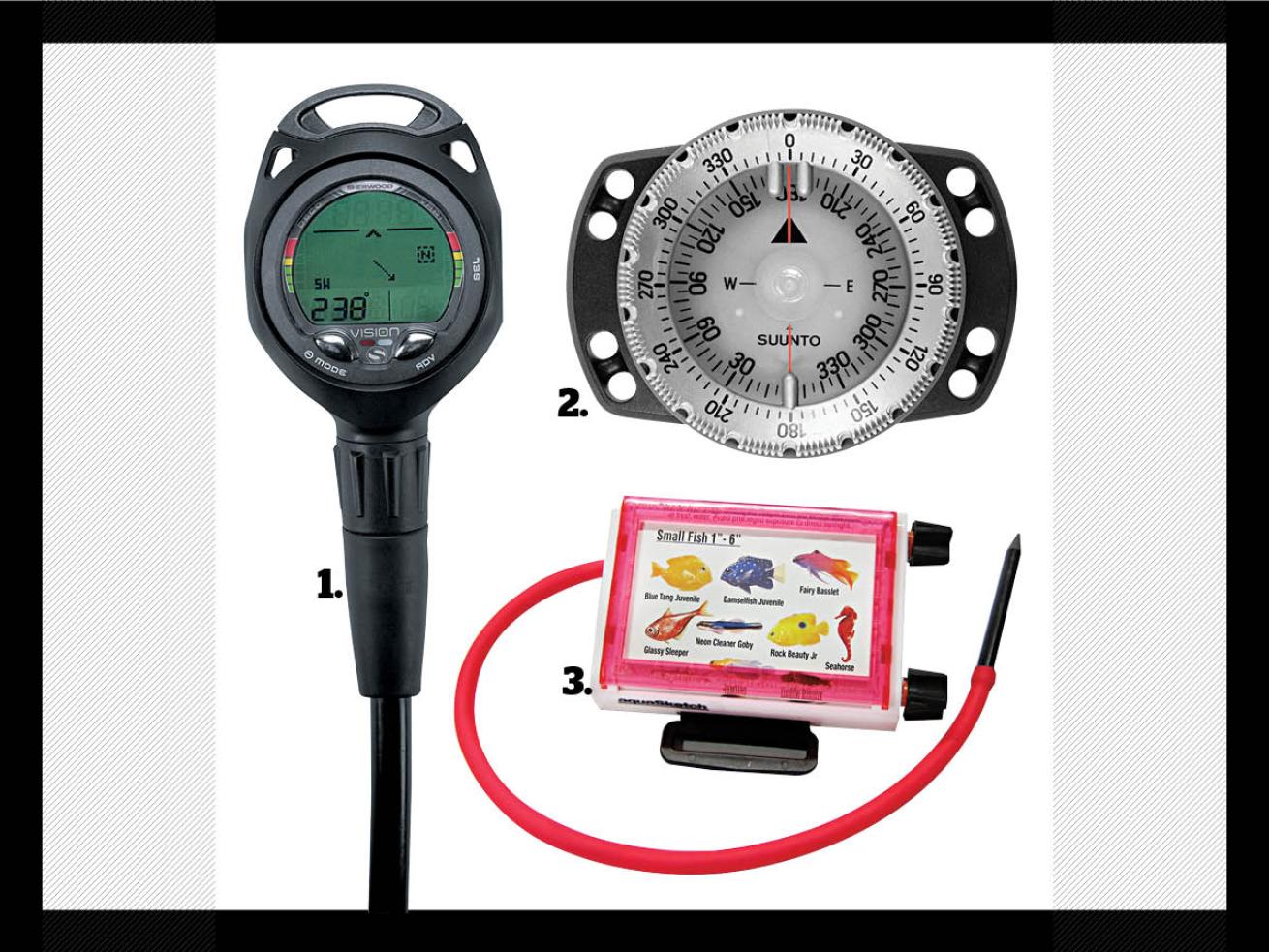How To Improve Your Underwater Navigation Skills

Jill HeinerthThe Lost World
Don't be too cool to ask for directions; take a few tips from the pros.
Getting lost is one of the worst feelings in scuba diving. Toward the end of a life-changing dive on which you spotted more amazing critters than you’ve ever seen in one place, you suddenly realize that you have no idea where you and your buddy are. We’ve all been there. Fortunately, there are sound procedures for navigating successfully from a boat or shore in unfamiliar surroundings and poor visibility — plus a few time-tested tricks that the saltiest among us have worked out the hard way.
“It’s always important to know where you are because there are no clear ‘roads’ underwater, and things can begin to all look the same,” says Shana Phelan, instructor and owner of Pura Vida Divers in Riviera Beach, Florida. “Navigation is the art of getting from one place to another safely.”
“The main thing that divers need to do is an honest self-assessment of where you are with your navigation skills,” recommends Richard Anderson, a master scuba diver trainer and owner of Seattle Dive Tours. “Identify your strengths and weaknesses, and seek the training and build the experience that you need to fill in those weaknesses.”
From simple situational awareness to mastery of key equipment, here are a few guiding principles from Phelan and Anderson that will help you find your way.
BECOME ONE WITH YOUR COMPASS
A simple compass is the first pillar of functional navigation. In our first open water scuba training, we’re taught basic techniques for its use, but we often neglect this most fundamental piece of our kit because we’re diving under the careful supervision of divemasters and other professional guides. Divers should have a compass on every dive to ensure their own safety, and using it should be second nature.
“The diver really needs to decide how they want to wear the compass and if they want it integrated into a console, in a computer or separate,” says Anderson. “An old-fashioned underwater compass is a smart choice, especially if you’re using it in conjunction with a slate and maybe a dive site map that’s mounted to your slate. A lot of the new electronic compasses integrated in dive computers work really well; however, keep in mind that they do need to be periodically calibrated.”
“Having a compass mounted on a navigation board can help with proper positioning and give you added length for your index line,” says Phelan. “And paying attention to the amount of time you swim in a certain direction or the number of kick cycles you make, both in and out of current, will allow you to measure distance covered in varying conditions.”
Get started with our crash course in using an underwater compass. You'll be a master navigator in no time.
FIND CLUES ALL AROUND YOU
Situational awareness is fundamental to all dive training, but it’s often the first thing scuba divers forget to practice when distracted by underwater awesomeness.
“Some common mistakes divers make are not paying attention to key natural navigation features, not listening well to the briefing, and not knowing how far they travel in a given amount of time,” Phelan says.
When finding your way around an unfamiliar site, look for distinctive landmarks, preferably within clear view of one another, that you can use to connect the points of your path.
“Don’t just solely rely on your compass,” Anderson advises. “Use some natural navigation techniques at the same time. You can leverage just really basic, easy things such as changes in depth.”
ASK FOR DIRECTIONS
Often information is available that can be used to plan your dive long before you make that giant stride. If you’re scuba diving a well-known region, a quick Web search can reveal maps, landmarks and other intelligence that can be printed on waterproof paper for easy reference at depth. There’s no substitute for planning.
“It’s fundamental to have a solid dive plan,” Anderson says. “You can definitely leverage things like slates to draw a simple map. If nothing else, you can use the slate to communicate with your dive buddy. And you can use those slates to mark your headings.”
It’s always best to have a visual, land-based reference before you descend so you have an idea of which direction you’re facing and where you plan to go. It can also be important for planned entry and exit points as well as helping you orient to where you plan to find an underwater feature.
SPLIT THE TASK LOAD
Navigation should be a team effort. Keeping track of your position and direction doesn’t have to be the responsibility of one scuba diver.
“Navigating is really about task-loading in the background. If you’ve got your compass, you’re also trying to see where you’re going and searching. At the same time, you’re also trying to keep track of your buddy, then hopefully see something along the way,” Anderson says. “You don’t have to do everything all at once, especially for newer divers. Delegate. If you can divide up the tasks with your buddy, that can help quite a bit.”
PRACTICE ON DRY LAND
There’s a heap of truth to the adage “practice makes perfect.” The same holds true for navigating. And you don’t have to wait until you’re underwater to get in a few reps. After all, a compass works on dry land too.
“Practice on land and get comfortable with your compass,” Anderson says. “And don’t be afraid to take a course to get in some additional practice time. The underwater navigator class that most of the certification agencies off er is a really fun one, and a search-and-recovery class allows you to get in a lot of compass work.”
Besides a class, your backyard is great place to polish your skills, especially if you’re using new or complicated equipment.
“A lot of the new dive computers have an electronic compass built in, but they will still take a little practice to get used to how to operate the compass and understand what it’s telling you,” he says.
For Phelan, nothing can replace “practice, practice, practice” for improving your navigation skills. And the benefits are big.
“Being a good navigator can allow for some amazing finds,” she says. “Many creatures stay in a small area, allowing you to find them again and again if you know how to get there.”
SCUBA DIVING GEAR FOR NAVIGATING UNDERWATER
Bolster your navigation skills with the right tools.

Courtesy Suunto, Jon WhittleGear Solutions
The right gear to help you get where you're going.
1. SHERWOOD SCUBA VISION
This next-level console computer offers a winning 2-D digital compass that displays heading data on a large screen for easy viewing. With four-gas capability, an intuitive three-button navigation system and a handy, locking quick-disconnect, it’s a capable tool for every breed of diver.
MSRP: $920 | INFO: sherwoodscuba.com
2. SUUNTO SK-8
The newest edition of this liquid-filled compass has been upgraded for faster stabilization, improved side-view visibility and durability. It’s designed for subzero temperatures, has a ratcheting bezel, and is available in a variety of mounts for traditional wrist straps, bungees and consoles.
MSRP: $105 | INFO: suunto.com
3. AQUASKETCH MINNO 1
With up to 5 feet of nearly indestructible mylar drafting film to scribble notes, maps and more, the wrist-mounted Minno with attached writing tool raises the game for dive slates. And it’s available in three colors, to coordinate with the rest of your kit.
MSRP: $49.95 | INFO: aquasketch.com
WANT MORE TRAINING?










